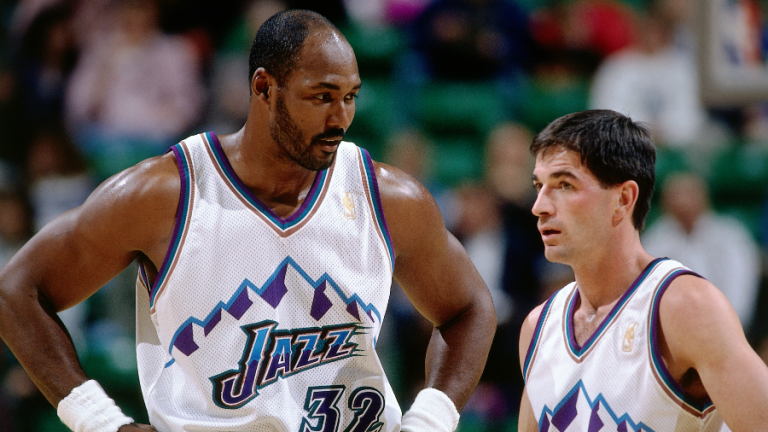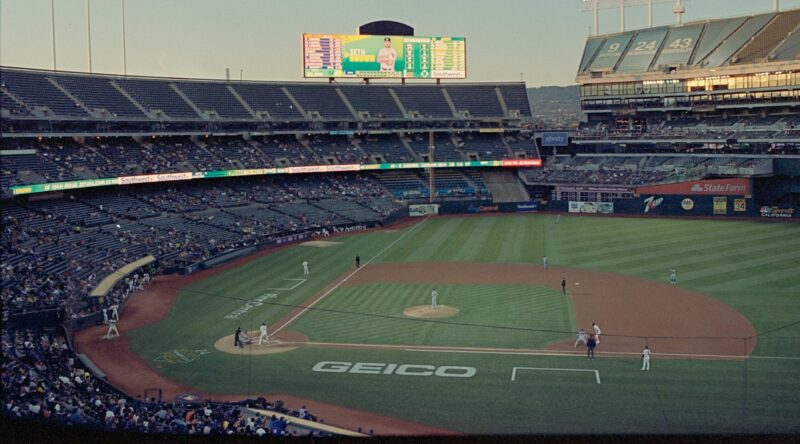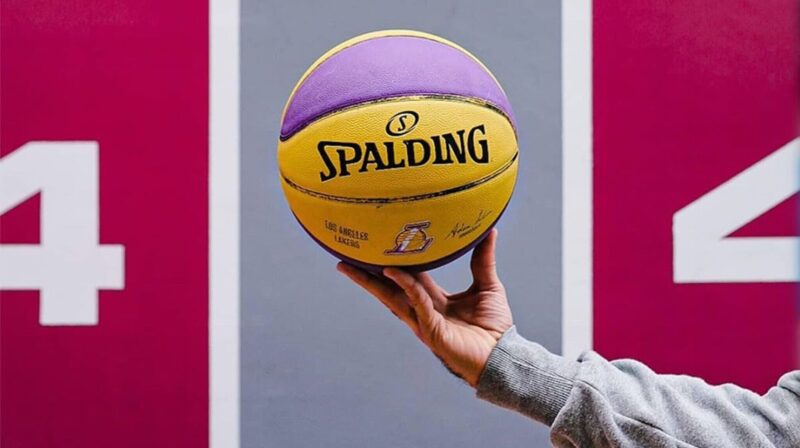In a season in which the top-ranked college basketball team is Gonzaga, it’s time to take a look back at the greatest player to come out of that school: Spokane’s hometown hero and Utah Jazz legend John Stockton. When I played high school basketball, my coach used to threaten us that if we didn’t practice hard, he’d make us wear “John Stockton booty-huggers.” While it’s true that Stockton persisted in wearing the 1980s short shorts as the rest of the NBA moved into the 1990s long shorts style, it’s also true that Stockton was much more than a reverse fashion icon. In fact, he was one of the very greatest to ever play the game. And if you take into account a combination of how small he was (6’1”, 170 lbs) and how small his shorts were, he may be – inch for inch – the greatest ever.
Stockton’s longtime teammate Karl Malone’s nickname was “The Mailman” because he always delivered, but Stockton was the real mailman. Shouldn’t the guy delivering the passes that set up the baskets be the one with that nickname? The lack of a memorable nickname is just one way Stockton is unappreciated. The NBA has five main counting statistics: points, rebounds, assists, steals, and blocks. Stockton is the all-time leader in two of those! And that’s after a four-year college career. His totals would be even higher if he’d jumped to the NBA sooner, as most players do today. His assist total of 15,806 is 31% higher than the number two man on the list, Jason Kidd (who only stayed in college for two years). And his steals total of 3,265 is 22% higher than the number two guy – Kidd, again. But before you go saying “It sounds like Kidd was the most comparable player to Stockton,” let’s look at their field goal percentages: Stockton shot .515 from the field and .384 from three for his career, while Kidd shot an atrocious .400 from the field and .349 from three. That’s how much more efficient a scorer Stockton was than another all-time great point guard.
As far as his shooting percentage goes, John Stockton shot from the floor like a center who only shoots from inside of ten feet, despite his being a 6’1” perimeter player. While most guards were shooting less than .500 from the field, Stockton routinely finished among the league’s top 20, including a fourth-place finish at .574 in 1987-88. He led the league in true shooting percentage (a measure which takes into account 2-point field goals, 3-point field goals, and free throws) three times and finished in the top five eight times. He never averaged more than 17.2 points per game (which he did in both 1989-90 and 1990-91 because the man was consistent), but he never took as many as 12 shots per game. If he played in today’s game where point guards shoot much more often, he could have been one of the game’s top scorers.
Stockton led the league in assists per game nine times (including a record 14.5 per game in 1989-90), and he led in assist percentage 15 times! (That’s the percentage of teammate field goals a player assisted on while on the floor, a better indicator of passing prowess given that it controls for the speed of the game more). With a career assist percentage of 50.24, he’s the only man in NBA history to assist on the majority of baskets made by his teammates while he was on the court. Chris Paul is a distant second, with a career percentage of 45.43.
In a 19-year career in one city, John Stockton played in every single game in 17 of those 19 seasons and only missed 22 games in total. He’s basically the Cal Ripken, Jr. of the NBA… if Cal Ripken, Jr. were a significantly better player. This is not to denigrate Ripken, who was great. It’s just that Stockton was even more elite as a basketball player than Ripken was at baseball.
The biggest knock on Stockton is that he never won a championship, but he played in the Finals twice where he had the misfortune of facing Michael Jordan’s dynastic Bulls (in 1997 and 1998). Other all-time great point guards of recent vintage like Chris Paul and Steve Nash never even reached a single Finals. And basketball is, of course, a team game. While Stockton had another Hall of Fame teammate in Karl Malone, the Jazz never had a third star, as championship teams usually require. Most title teams have at least three Hall of Fame players; Stockton barely had a teammate beyond Malone even make an All-Star team. And yet he never once missed the playoffs in his 19 years.
Lest you think that the man kept playing up to age 41 just to compile more stats even as he slipped to a subpar level like many stars who play that long, let’s look at what he did in his final seasons. At age 38 and again at age 39 he led the league in offensive rating (an estimate of points produced per 100 possessions). At age 41, he finished fifth in assists, ninth in steals, and 20th in field goal percentage. And he topped the league in assist percentage again! He was a machine. He could have played until his mid-40s. And he would have if only he hadn’t had six children at home, which made him feel guilty to be on the road so often.
Stockton is sixth all-time in Win Shares (an estimate of the number of wins contributed by a player) with 207.7. Maybe it’s time we start thinking of John Stockton as an all-time top ten player. Or at the very least, start thinking about him a little more. Now, if you’ll excuse me, I’m going to do just that while I pull on my booty-huggers and hit the court.





